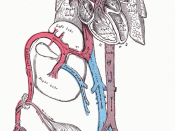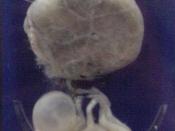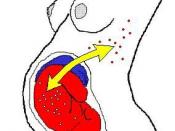The zygote created from fertilization travels down and through the oviduct, dividing by nuclear and cell divisions by a process called cleavage, to form a tiny ball. The cells formed here are called blastomeres, which create a hollow ball of cells (the central cavity is called the blastocoel, which is filled with liquid from the oviduct). The outer layer of the blastomeres (trophoblast) thickens to form the "ÃÂinner cell mass'. When the body arrives at this stage (blastocyst), in the uterus, the zona pellucida starts to disappear allowing the trophoplast cells and the cells of the endometrium to make contact. In this process the trophoblast practically invades the walls, obtaining nutrients from the endometrium which allow the trophoblast cells to multiply. After a period of approximately six to nine days after fertilisation, the blastocyst becomes embedded inside the endometrium "ÃÂ implantation. The trophoblast cells now separate into an inner and outer layer (the chorion).
The chorion forms finger-like processes called chorionic villi, which eventually grow into the endometrium. The arterial and venous blood vessels in the endometrium break allowing the blood to fill the spaces between the chorionic villi. At very early stages, the exchange of nutrients, oxygen and excretory materials between the cells of the blastocyst and the maternal blood (in the uterus) take place through these chorionic villi (this function is later taken over by the placenta).
The placenta is the sole organ in mammals composed of cells of two different organisms, the mother and the fetus. Its functions are basically to allow exchange of materials between the two organisms. The placenta is put into operation after about 12 weeks of pregnancy.
One of the substances crossing through the placenta is water. It passes through by the process of osmosis. Respiratory gasses, such as oxygen, which...


